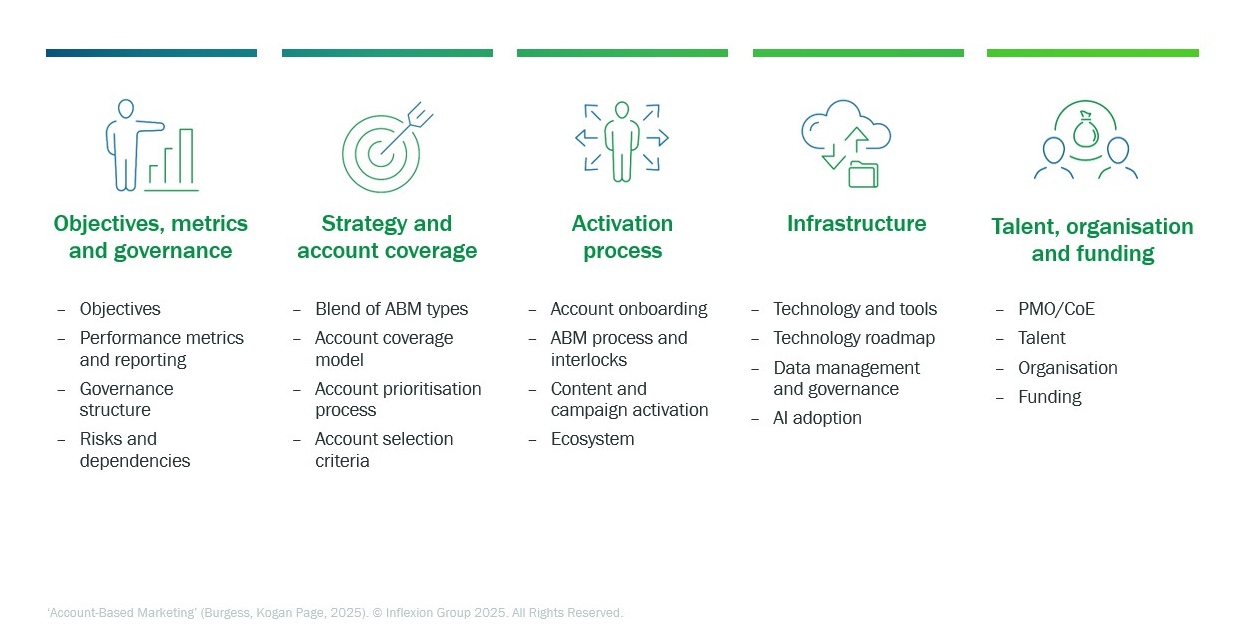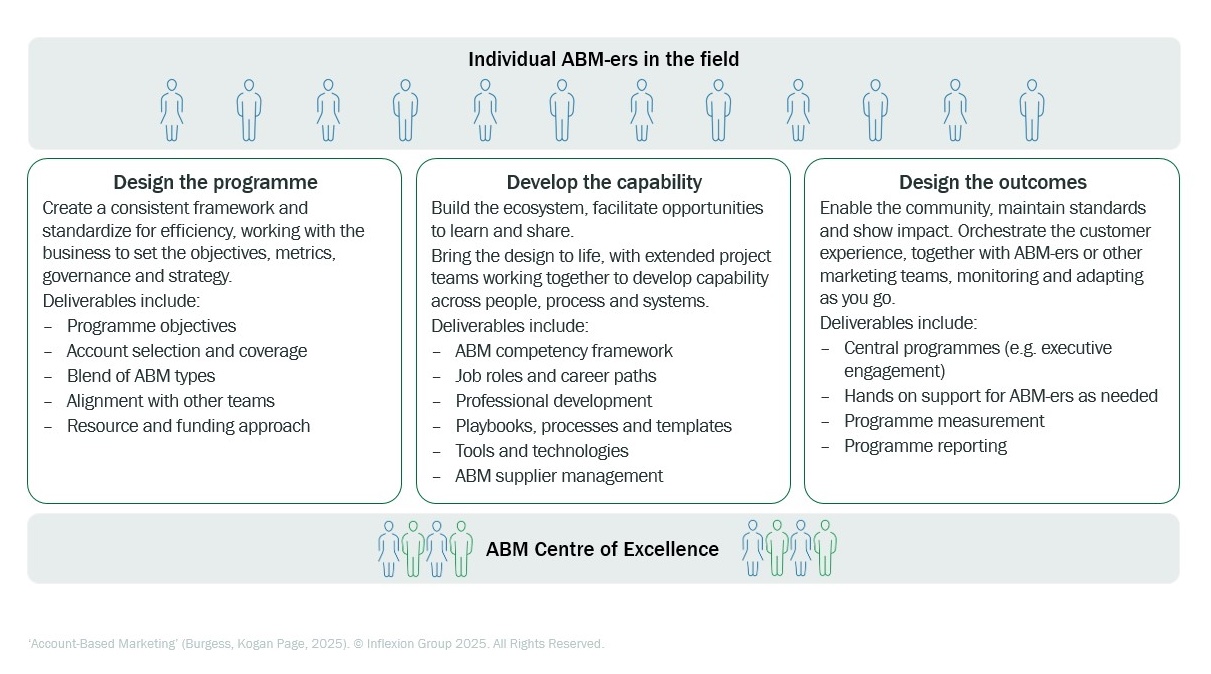Most ABM programmes follow a predictable evolution. Organisations typically begin with pilot initiatives, experimenting with different ABM approaches to understand what resonates with their target accounts and internal processes. As these pilots demonstrate value, companies naturally expand their efforts across the business. However, success brings its own challenges: without standardised processes and frameworks, scaling ABM effectively becomes increasingly difficult. The organisations that manage it are those that proactively standardise their methodology, create repeatable playbooks, and build the operational infrastructure to deliver personalised experiences at scale.
Inflexion Group’s 2024 ABM benchmarking study reveals the current maturity of ABM in complex, global organisations: 25% are still piloting, 34% are actively scaling their programmes, and 41% have achieved full standardisation with global deployment. The gaps between piloting and scaling and then scaling and standardisation represent the critical challenges most ABM teams face. I’ve observed that those who successfully bridge these gaps consistently establish an ABM Centre of Excellence (CoE) or Programme Management Office (PMO). Having helped multiple leading technology and professional services firms set up their CoE, here are my views on why it is key to scaling your programme and how to set one up effectively. The question isn’t whether you need a CoE, but how to design it for maximum impact while maintaining the agility that makes ABM so powerful.
Implementing an effective ABM programme
At Inflexion Group we have developed the following framework for ABM programme success. 
Our five-pillar ABM framework distils what separates high-performing programmes from those stuck at the pilot stage. These 20 dimensions span from foundational elements to advanced ecosystem orchestration—and critically, most require centralised coordination to execute effectively. Let’s look at each area in turn.
1. Programme objectives, metrics and governance
Elements that require CoE ownership include programme objectives, success metrics, and governance structures. Ensuring your ABM programme aligns with broader company strategy is vital and securing a senior business leader as programme sponsor becomes critical as you scale. The most effective programmes establish a governance or steering board to maintain business alignment, drive adoption, align with sales and account management, allocate resources, and provide executive advocacy.
2. Strategy and account coverage
As most companies adopt a blended ABM strategy, another key role of the CoE is to consider the account prioritisation process and coverage model. In fact, blended models are essential for scaling as they enable you to navigate regional and local market differences.
3. ABM activation process
Supporting global ABM teams requires robust processes for content and campaign activation—and executing this effectively usually relies on an ecosystem of internal and external resources.
4. Infrastructure
Infrastructure and data present significant challenges for ABM programme leaders, with poor technology integration ranking as a top programme risk. The CoE must assess what the ABM team needs against what’s available, and partner with operations teams to develop a comprehensive technology roadmap—including opportunities for AI integration.
5. Talent, organisation and funding
The final pillar encompasses talent, organisation and funding for your ABM programme – including resourcing the CoE itself. The CoE’s role here extends beyond securing central funding and managing resources to building an ABM community that connects global practitioners to share experiences and best practices.
The role of an ABM Centre of Excellence
While the scope of a CoE varies by organisation, core responsibilities consistently include designing the programme to align with business objectives, developing capability across ABM teams, and delivering outcomes by enabling the ABM community enablement, maintaining standards and reporting business impact. This figure outlines the key CoE responsibilities.

And how big does a CoE need to be? That depends on your organisational model: direct management of a centralised ABM team requires different resources than coordination across decentralised or hybrid structures. Most organisations use a decentralised model, with ABM practitioners reporting locally, while a lean CoE team provides coordination and governance.
Whatever the size of your CoE, leveraging this five-pillar framework to establish or optimise your programme – combined with the right tools and templates for design, capability development, and outcome delivery – provides a proven pathway to scale ABM.




